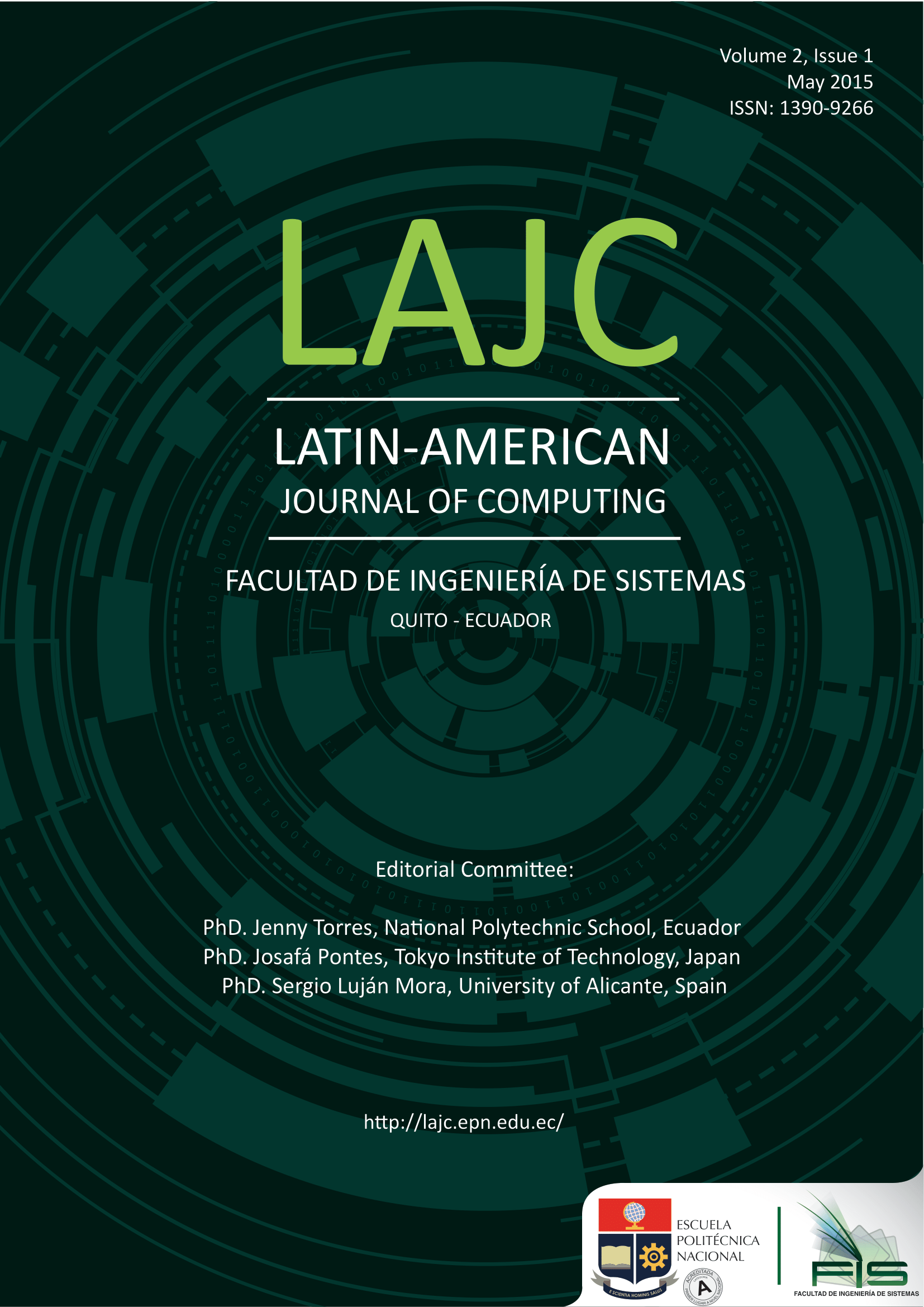High Performance Cluster Architecture Using Free Software Tools
Keywords:
Cluster, Middleware, Mosix, MPICH, BeowulfAbstract
In this article the results of implementing a beowulf cluster type II architecture, with conventional hardware and free software tools is presented, allowed to convert a laboratory used for teaching programming systems, in a room with high performance, through a software: MPICH, Mosix, Blender, Hadoop and Ganglia Monitoring System. The method using for troubleshooting allowed; understanding the problem, and to design a solution strategy and achieve implementation of the cluster architecture with a performance like a supercomputer by optimizing the processing time: process simulation, pattern recognition, image and video rendering, and an analysis of Big Data, encryption codes, evaluation algorithms, etc. The tests allowed the processing of millions of operations per second reaching an efficiency of 85.2% of total capacity of cluster. This important achievement expedite also the academy investigation in others realms where required to process large volumes of information and get results in a short time.
Downloads
References
G. Cáceres, “Estrategia de implementación de un clúster de alta disponibilidad de N nodos sobre linux usando software libre”, 2012.
L. M. Santos Jaimes, S. Peñaloza, and E. R. Cruz Cruz, “Cluster implementation of a prototype for the resolution of a particular problem”, Journal Article, vol. 1 2010.
N. Pérez Otero, S. Méndez, C. V. Ayusa, M. I. Aucapiña, and V. J. Lopez, “Aplicaciones del cómputo de altas prestaciones”, in XI Workshop de Investigadores en Ciencias de la Computación, 2013.
D. Zhao, K. Qiao, and I. “Raicu, HyCache+: Towards Scalable HighPerformance Caching Middleware for Parallel File Systems”, in IEEE/ACM CCGrid, 2014.
J. d. J. R. Quezada, S. B. Rionda, J. M. V. Félix, and I. A. M. Torres, “Diseño e implementación de un clúster de cómputo de alto rendimiento”, Acta Universitaria, vol. 21, pp. 24-33, 2011.
R. Gualán, A. Vásquez and O. Vega, “Una primera aproximación a la implementación de un clúster para la ejecución de un modelo de predicción climática”, 2012
R. Quezada S. B. Rionda, J. Felix, and I. Torres, “Diseño e implementación de un clúster de cómputo de alto rendimiento, Acta Universitaria, vol.21, pp. 24-33, 2011.
A. Barack and A. Shiloh, “The MOSIX Cluster Operating System for Distributed Computing on Linux Clusters, Multi-Clusters and Clouds”, 2014.
M. C. O. System, “Administrator’s, User’s and Programmer’s Guides and Manuals”, July 2014.
R. Latham and A. J. Pe, “MPICH Installer’s Guide”, Mathematics and Computer Science Division Argonne National Laboratory, 2014.
Blender, “Blender is a free and open source 3D animation suite” [Online]. Available: http://www.blender.org/. [Accessed: 05-Nov-2014].
R. Serrat Morros, “Big Data: análisis de herramientas y soluciones”, 2013.
Apache, “Hadoop - Apache Hadoop 2.5.1.” [Online]. Available: http://hadoop.apache.org/docs/r2.5.1/index.html. [Accessed: 13-Nov2014].
G. M. System, “Ganglia Monitoring System” [Online]. Available: http://ganglia.sourceforge.net/. [Accessed: 04-Dec-2014].
B. Otero, R. Astudillo, and Z. Castillo, “Un esquema paralelo para el cálculo del pseudoespectro de matrices de gran magnitud,” Revista Internacional de Métodos Numéricos para Cálculo y Diseño en Ingeniería, 2014.
A. Sheharyar and O. Bouhali, “A Framework for Creating a Distributed Rendering Environment on the Compute Clusters”, arXiv preprint arXiv:1401.0608, 2014
R. Bhatnagar and J. Patel, “Performance Analysis of A Grid Monitoring System-Ganglia”, International Journal of Emerging Technology and Advanced Engineering, vol. 3, pp. 362-365, 2013.
Downloads
Published
Issue
Section
License
Copyright Notice
Authors who publish this journal agree to the following terms:
- Authors retain copyright and grant the journal right of first publication with the work simultaneously licensed under a Creative Commons Attribution-Non-Commercial-Share-Alike 4.0 International 4.0 that allows others to share the work with an acknowledgement of the work's authorship and initial publication in this journal.
- Authors are able to enter into separate, additional contractual arrangements for the non-exclusive distribution of the journal's published version of the work (e.g., post it to an institutional repository or publish it in a book), with an acknowledgement of its initial publication in this journal.
- Authors are permitted and encouraged to post their work online (e.g., in institutional repositories or on their website) prior to and during the submission process, as it can lead to productive exchanges, as well as earlier and greater citation of published work.
Disclaimer
LAJC in no event shall be liable for any direct, indirect, incidental, punitive, or consequential copyright infringement claims related to articles that have been submitted for evaluation, or published in any issue of this journal. Find out more in our Disclaimer Notice.










